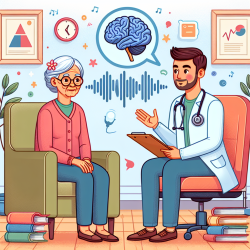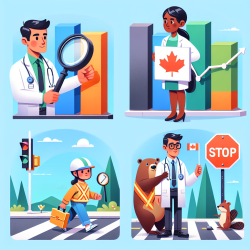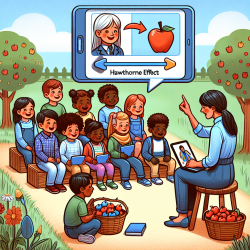Introduction
As speech-language pathologists (SLPs), our mission is to create meaningful and lasting outcomes for the children we serve. In our pursuit of excellence, we must leverage data-driven decisions and evidence-based practices. One such area of interest is the impact of the built environment on health and well-being. A recent study titled Comparing the Normalized Difference Vegetation Index with the Google Street View Measure of Vegetation to Assess Associations between Greenness, Walkability, Recreational Physical Activity, and Health in Ottawa, Canada offers valuable insights that can enhance our practice.
Key Findings of the Study
The study examined the associations between neighborhood greenness, walkability, recreational physical activity, and health among Ottawa residents. The researchers utilized two measures of greenness: the Normalized Difference Vegetation Index (NDVI) and the Google Street View (GSV) measure. Here are some key findings:
- The NDVI was not associated with participation in recreational activities or physical and mental health.
- The GSV measure was positively associated with recreational activities during the summer, with those in the highest quartile spending 5.4 more hours weekly on recreational activities than those in the lowest quartile.
- Active living environments were associated with increased utilitarian walking and reduced reliance on motor vehicles.
Implications for Speech-Language Pathologists
While the study focuses on physical activity and general health, its findings have significant implications for SLPs working with children. Here’s how we can implement these insights to improve our practice:
1. Incorporate Outdoor Activities
Given the positive association between greenness and recreational activities, consider incorporating outdoor activities into your therapy sessions. Activities such as nature walks, outdoor games, and storytelling in green spaces can enhance engagement and provide a stimulating environment for language development.
2. Advocate for Greener School Environments
SLPs can play a crucial role in advocating for greener school environments. Collaborate with school administrators and local authorities to promote the development of green spaces within school premises. These spaces can serve as therapeutic environments that support both physical and cognitive development.
3. Utilize Data to Tailor Interventions
Use data-driven approaches to tailor interventions based on the child’s environment. Assess the walkability and greenness of the child’s neighborhood and incorporate this information into your therapy plans. For instance, children in greener neighborhoods may benefit from more outdoor activities, while those in less green areas may require alternative strategies to encourage physical activity.
4. Encourage Family Involvement
Engage families in the therapeutic process by encouraging them to participate in outdoor activities with their children. Provide resources and suggestions for family-friendly activities that promote language development and physical health. This collaborative approach can enhance the effectiveness of therapy and support overall well-being.
Encouraging Further Research
While the study provides valuable insights, it also highlights the need for further research. SLPs can contribute to this growing body of knowledge by conducting studies that explore the impact of the built environment on speech and language development. Consider collaborating with researchers and institutions to investigate how factors such as greenness and walkability influence communication skills in children.
Conclusion
As SLPs, we have the opportunity to create significant positive outcomes for the children we serve by integrating data-driven decisions into our practice. The findings from the study on greenness, walkability, and health underscore the importance of considering the built environment in our therapeutic approaches. By incorporating outdoor activities, advocating for greener environments, utilizing data, and encouraging family involvement, we can enhance the effectiveness of our interventions and support the holistic development of children.
To read the original research paper, please follow this link: Comparing the Normalized Difference Vegetation Index with the Google Street View Measure of Vegetation to Assess Associations between Greenness, Walkability, Recreational Physical Activity, and Health in Ottawa, Canada.










